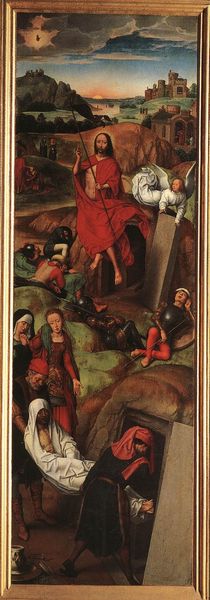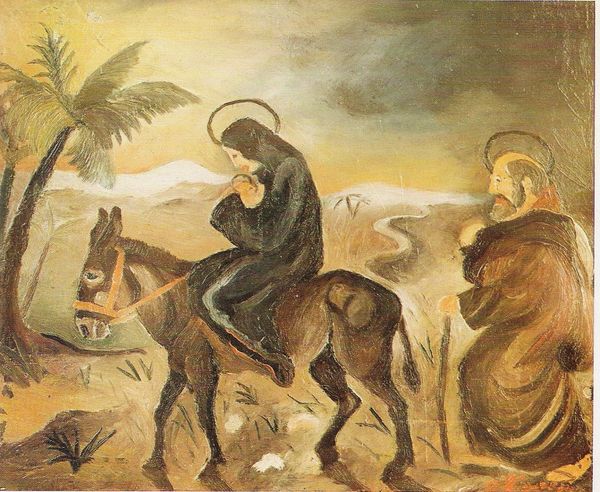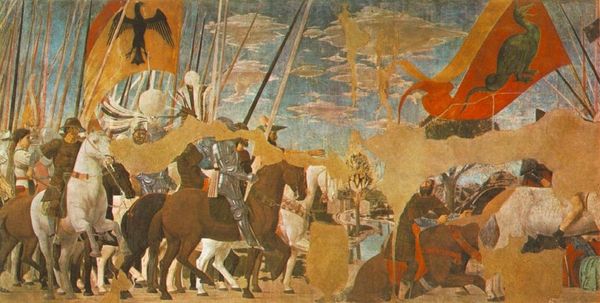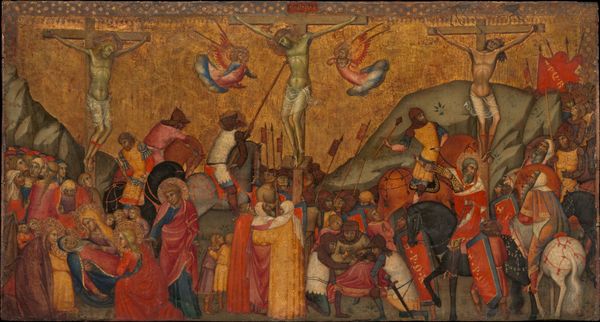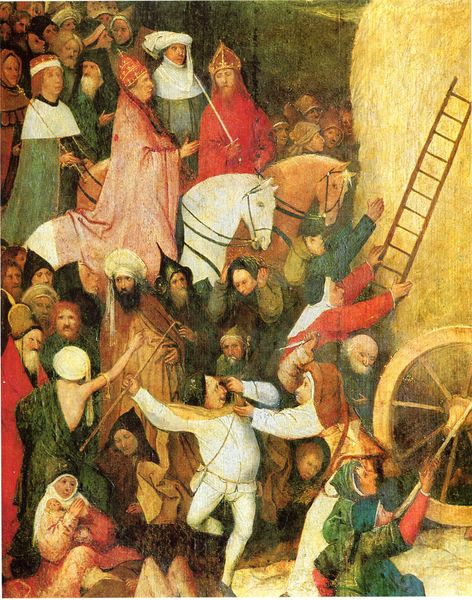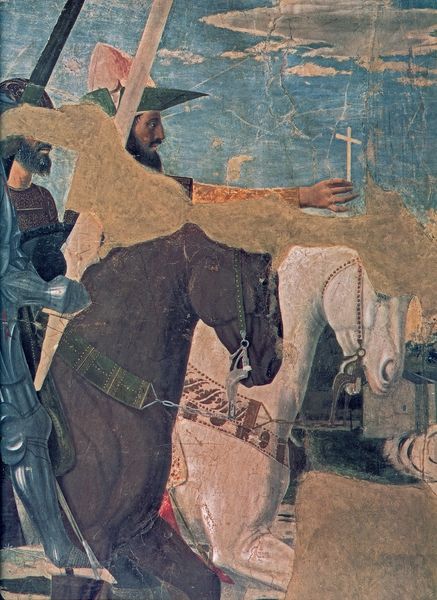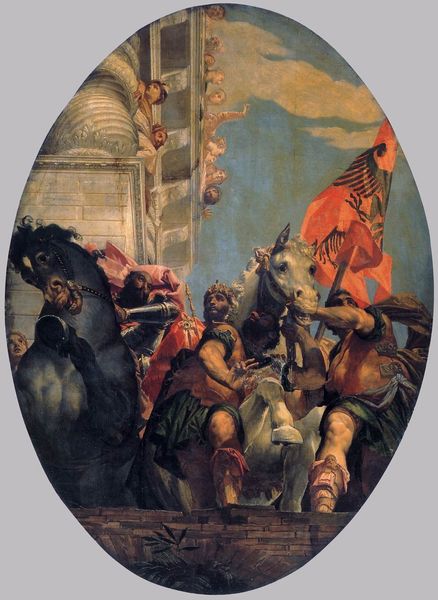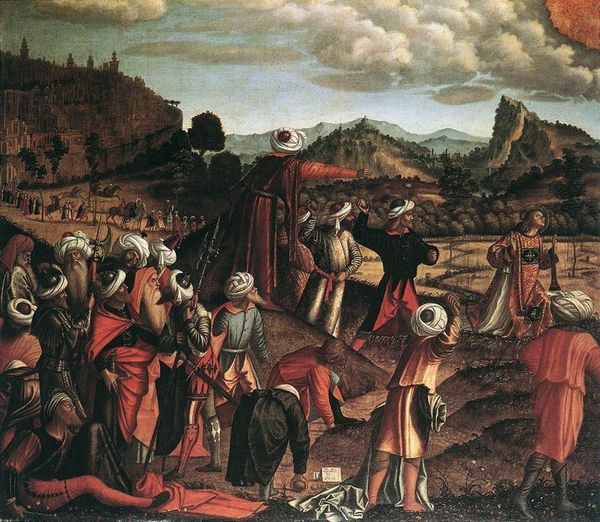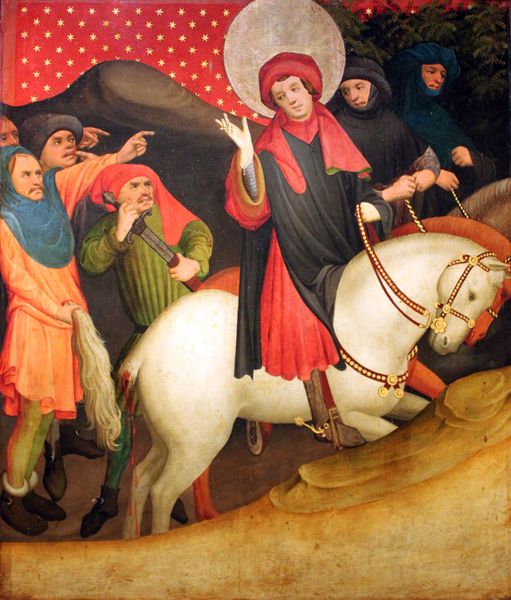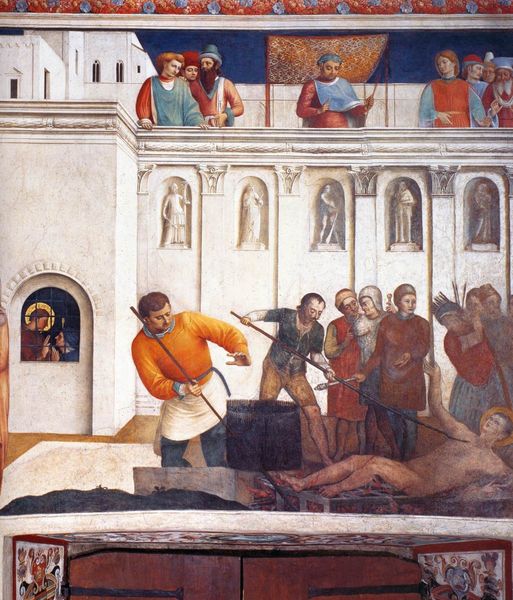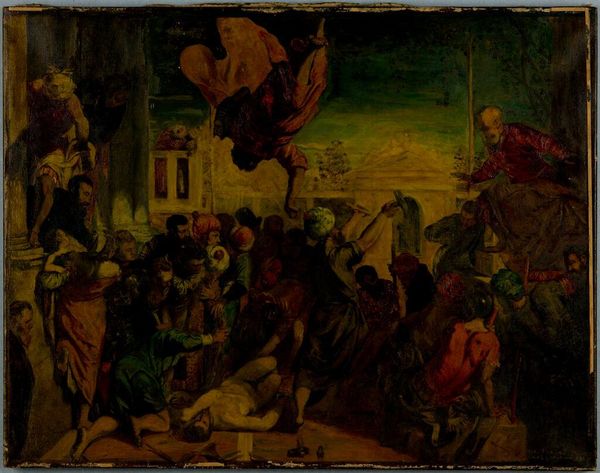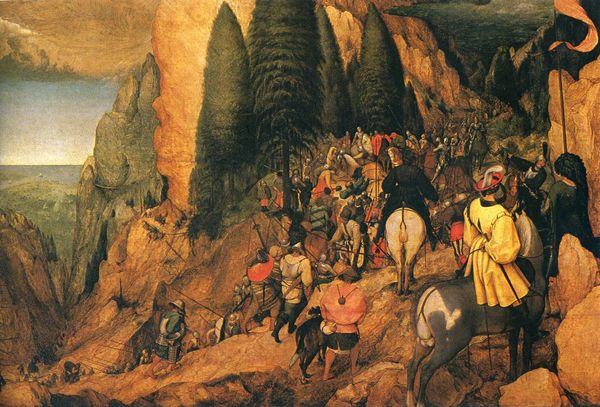
The New School 1923
0:00
0:00
diegorivera
Secretariat of Public Education Main Headquarters, Mexico City, Mexico
fresco, mural
#
narrative-art
#
figuration
#
social-realism
#
fresco
#
mexican-muralism
#
mural
Copyright: Public domain US
Editor: This is "The New School," a 1923 fresco by Diego Rivera. I’m struck by the juxtaposition of armed figures on horseback with a scene of children being taught to read. How do you interpret this work? Curator: The symbols at play here are potent. Notice the rifleman: a figure of power, but also, perhaps, of necessary protection in a society undergoing immense change. His presence alongside the image of learning immediately posits a tension – power versus knowledge, control versus liberation. What feelings are stirred by his stance? Editor: It's a little unsettling, honestly. It makes me wonder if education is being presented as something…imposed, rather than freely embraced. Curator: Precisely. Consider also the setting. The parched earth meets a landscape pregnant with both agricultural potential and visual drama. Rivera uses these symbolic oppositions to engage the viewer with Mexico’s historical trajectory following its revolution. Does this add another dimension to how you interpret this mural? Editor: Definitely. The background landscape with figures working evokes collective labor. The whole piece suggests a society caught between old and new. It isn't just about teaching kids to read but constructing a new reality. Curator: The woman reading to the children reminds me of depictions of madonnas: motherhood representing not just nurture but the fertile ground of Mexican identity. With her, can you recognize symbols of what Rivera envisions for Mexico's future? Editor: I see what you mean. She embodies hope and progress but framed with the soldier implies a complicated road ahead. Curator: It is an intricate layering of historical memory and future aspirations. What do you make of Rivera framing the narrative within colonial arches? Editor: The colonial framing adds a layer of irony. It’s a new beginning under the lingering gaze of colonial history, always influencing the present. Curator: The dialogue here highlights how education in "The New School," symbolized through literacy and labour, must address and transform inherited legacies. Editor: Seeing it as a symbolic push-and-pull changes everything. It gives it depth and tension that really reflects the historical moment. Thanks, that really opened my eyes.
Comments
No comments
Be the first to comment and join the conversation on the ultimate creative platform.

